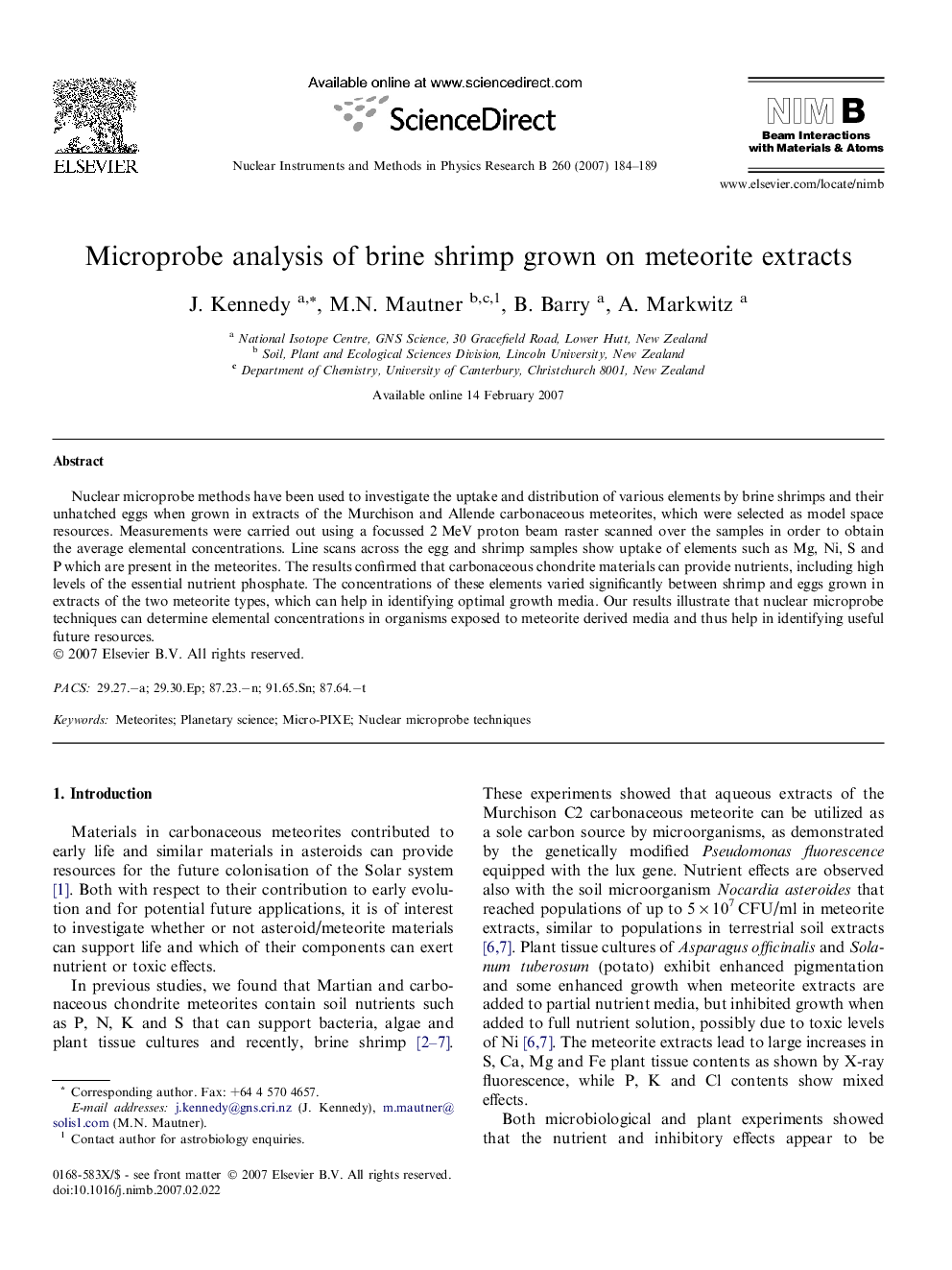| Article ID | Journal | Published Year | Pages | File Type |
|---|---|---|---|---|
| 1687749 | Nuclear Instruments and Methods in Physics Research Section B: Beam Interactions with Materials and Atoms | 2007 | 6 Pages |
Abstract
Nuclear microprobe methods have been used to investigate the uptake and distribution of various elements by brine shrimps and their unhatched eggs when grown in extracts of the Murchison and Allende carbonaceous meteorites, which were selected as model space resources. Measurements were carried out using a focussed 2Â MeV proton beam raster scanned over the samples in order to obtain the average elemental concentrations. Line scans across the egg and shrimp samples show uptake of elements such as Mg, Ni, S and P which are present in the meteorites. The results confirmed that carbonaceous chondrite materials can provide nutrients, including high levels of the essential nutrient phosphate. The concentrations of these elements varied significantly between shrimp and eggs grown in extracts of the two meteorite types, which can help in identifying optimal growth media. Our results illustrate that nuclear microprobe techniques can determine elemental concentrations in organisms exposed to meteorite derived media and thus help in identifying useful future resources.
Related Topics
Physical Sciences and Engineering
Materials Science
Surfaces, Coatings and Films
Authors
J. Kennedy, M.N. Mautner, B. Barry, A. Markwitz,
